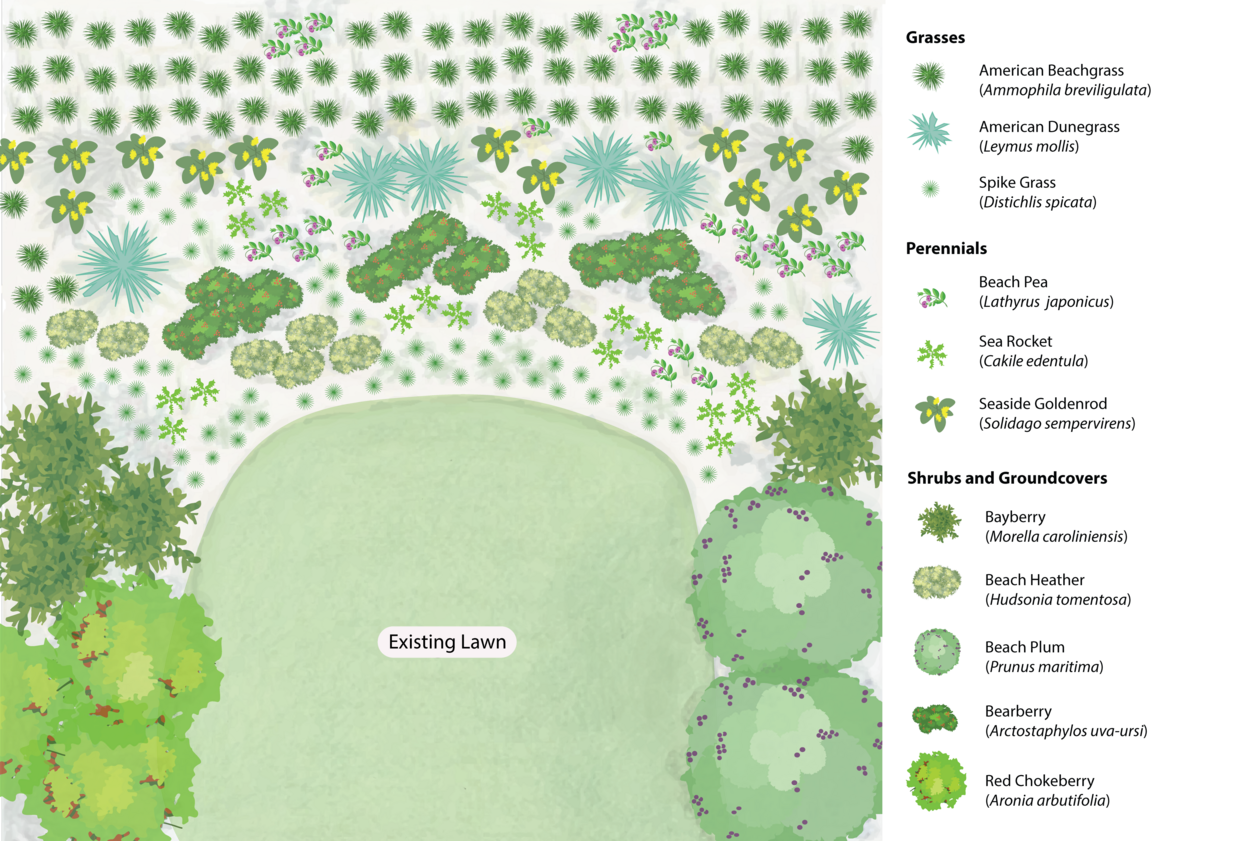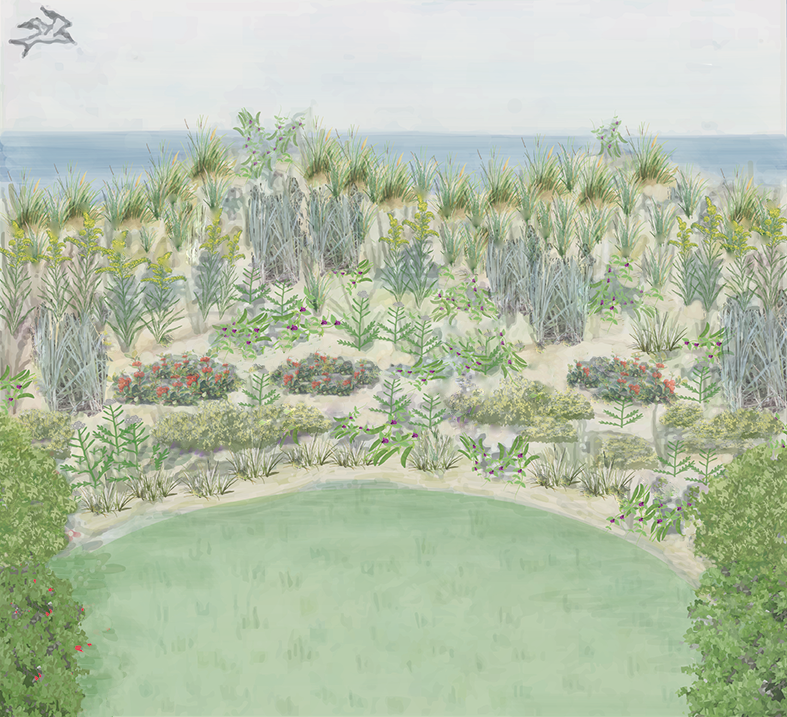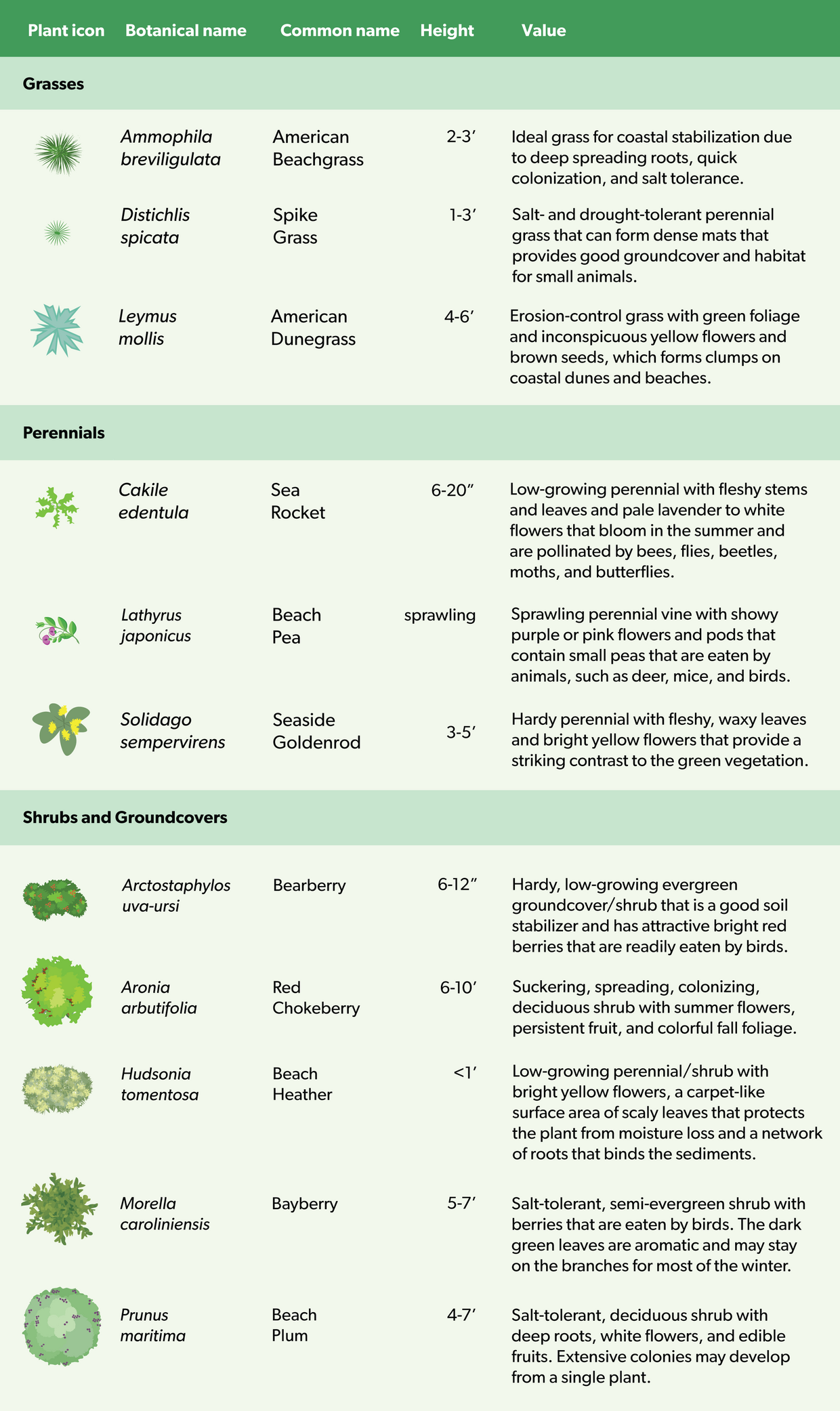Beachgrass and other native plants can stabilize sandy soils and catch sand to help build dunes, providing storm-damage protection for your property. Planting a buffer between your house and the dune provides additional benefits—filtering sediments and pollutants, providing habitat and food for wildlife, and reducing lawn (which needs a lot of maintenance, fertilizer, and water in coastal areas).
Please note: Projects near salt marsh, beaches, dunes, and other protected areas may require a permit through the local Conservation Commission. See Coastal Landscaping in Massachusetts - Do You Need a Permit? for details.
Unless otherwise noted, all plants in the landscape plan, illustration, and plant key below are native species. For more detailed descriptions of each plant, see Grasses/Perennials, Shrubs/Groundcovers/Vines, and Trees. For more coastal landscape plans, see Coastal Bank, Coastal Bank with an Existing Seawall, and Meadow Buffer to Salt Marsh.
Landscape Plan for Coastal Dune
This design incorporates a variety of native grasses, perennials, groundcovers, and shrubs that are well suited for a coastal dune environment. The recommended plants are well adapted to sunny areas and are resistant to dry conditions, wind, salt spray, and sand-overtopping. Because coastal homeowners often want to maintain some lawn area, a lawn is included in this plan. However, lawn grasses provide very little storm-damage protection and wildlife benefit, and are therefore not recommended in dune environments and should be kept as small as possible.
Illustration of a Landscape Plan for Coastal Dune
Plants in this design were selected for their ability to effectively cover, bind, and build sediments. For example, the spreading roots of beachgrass and dunegrass help stabilize sediments, while groundcover like beach pea and bearberry protect against wind erosion. Larger shrubs, such as red chokeberry and beach plum, spread to form a network of stabilizing roots. Many of these recommended plants also provide attractive spring or summer flowers and fruits and colorful fall foliage.
Plant Key
For a printer-friendly version of this plant key, see the Coastal Dune Plant Key (PDF, 689 KB).


